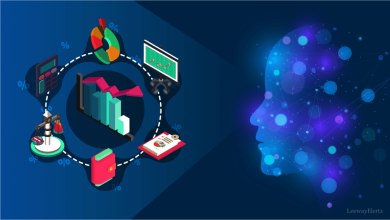Picture opening an app that feels one step ahead, predicting your needs, offering helpful suggestions, and cutting down on repetitive tasks. This is the promise of artificial intelligence in mobile experiences. According to a McKinsey study, companies that excel at personalization can generate up to 40% more revenue than their peers.
In this guide on how to integrate AI into an app, you’ll learn, step by step, how to plan your strategy, choose the right data sources, pick effective models or APIs, test thoroughly, and launch AI features that feel natural to your users. By the end, you’ll be ready to create an app experience that’s smarter, more engaging, and more profitable. Ready to get started? Let’s dive in!
Key Steps on How to Integrate AI Into an App Successfully
1. Define Clear Goals & Use Cases
Start by asking yourself what real problem you want AI to solve inside your app. Are your users struggling to find the right content, needing faster support, or expecting smarter recommendations? Narrowing down one or two high-value use cases will keep you from wasting time on features that look impressive but add little value.
Think about how success will be measured: higher retention, faster task completion, or increased sales. By clarifying your goals early, you’ll have a clear roadmap for development, making it much easier to choose the right tools, data, and when to hire AI developers later in the process.
Best Practices:
- Write down 2–3 high-impact use cases instead of trying everything at once.
- Align AI goals with your business goals (more retention, better conversions, faster support).
- Set clear metrics such as “reduce response time by 30%” or “increase recommendations click-through by 15%.”
Benefits:
- You avoid wasting money on features that look cool but don’t help users.
- Your team stays focused and can measure success easily.
2. Assess Data Readiness
Before you build any AI feature, especially when planning how to integrate AI into an app, take a close look at the data your app already collects. Is it accurate, current, and detailed enough to teach a model how to behave? For a social media post maker, this could mean analyzing engagement data, trending keywords, or user interaction history. Check whether it covers all your user types, and whether privacy or consent issues need attention.
If gaps appear, plan how you’ll gather or clean data now rather than later. This groundwork helps your AI deliver reliable, fair results instead of unpredictable outcomes.
Best Practices
- Audit what data you already have: Is it accurate, labeled, and up to date?
- Spot gaps and fix privacy risks early (GDPR, CCPA).
- If the data is weak, plan to collect new or synthetic data before training.
Benefits
- Reduces errors and bias in AI decisions.
- Builds trust with users by respecting their data and privacy.
3. Choose Tools, Platforms & Models
Once you know what you want AI to do and have reliable data, focus on picking the right engines to power it. Deciding on the right tools is a core part of learning how to integrate AI into an app effectively.
Choose whether pre-built APIs suit your needs for speed or if a custom model will give you more control. Match your choice to your app’s platform: Core ML for iOS, TensorFlow Lite for Android, or cloud services for heavier tasks. Also, think about cost, latency, and scalability so your AI feature stays efficient and sustainable as your app grows.
Best Practices:
- Start with pre-trained models or APIs to test your idea quickly.
- Pick frameworks that fit your app’s platform (CoreML for iOS, TensorFlow Lite for Android).
- Consider latency, cost, and long-term scalability.
Benefits:
- Faster development with less upfront cost.
- Flexibility to switch or upgrade later as your needs grow.
4. Design UX & UI for AI Features
A powerful AI feature can still fail if the interface feels confusing or intrusive. When planning how to integrate AI into an app, also think about how and when your users will interact with it, what feedback they’ll see, and how transparent it should be.
Use clear language and gentle prompts so people understand what the AI is doing. Designing with empathy builds trust and keeps your AI from feeling like a “black box” inside the app.
Best Practices:
- Explain what the AI is doing (“Finding best match for you” instead of a blank spinner).
- Give users control,like undo, feedback buttons, or opt-outs.
- Keep privacy notices simple and visible.
Benefits:
- Users trust and adopt your AI features more quickly.
- Fewer support tickets from confused or frustrated users.
5. Train / Fine-Tune / Integrate the Model
With your data and design ready, it’s time to make the AI actually work inside your app. If you’re using a pre-built model, start by testing it with your own data to see how well it performs.
For custom models, train and fine-tune them gradually so you can catch errors early. Integrate the model into your backend or mobile app in small steps, checking stability and accuracy at each stage to ensure a smooth user experience.
Best Practices:
- Start with small test datasets to validate model behavior.
- Fine-tune pre-trained models on your specific data for better accuracy.
- Use modular code so you can swap models without rewriting the whole app.
Benefits:
- Higher accuracy and relevance for your users.
- Faster iterations when you want to improve or add new AI features.
6. Test, Validate & Optimize
Once your AI feature is built, don’t rush to release it. Test it under real conditions, not just in a lab. Try it with different devices, network speeds, and user scenarios to see how it behaves.
Check accuracy, response times, and how it handles unusual inputs or edge cases. Collect feedback from a small group of real users to spot issues you might miss. Use what you learn to refine the model and your app’s flow, so when you launch, it feels reliable and polished from day one.
Best Practices:
- Test with real user scenarios and diverse data.
- Measure speed, battery use, and network load on different devices.
- Gather user feedback early and often.
Benefits:
- Prevents bad surprises at launch.
- Builds a feedback loop that keeps your AI improving over time.
7. Deployment & Monitoring
Launching your AI feature is just the start, not the finish line. Roll it out gradually, perhaps to a small group of users first, so you can catch problems early.
Keep an eye on how the model performs in the real world; accuracy, speed, user feedback, and data drift can all change over time. Schedule regular reviews to retrain or update your model as needed. Ongoing monitoring helps your AI stay reliable, relevant, and valuable as your app and audience grow.
Best Practices:
- Roll out features gradually (beta tests, A/B testing).
- Monitor model performance and user satisfaction continuously.
- Schedule periodic retraining or updates to stay accurate.
Benefits:
- Catch problems before they affect all your users.
- Maintain a competitive edge as your AI keeps learning.
Conclusion
Integrating AI into an app is less about flashy technology and more about solving real problems for your users. When you move through each stage, defining goals, preparing data, choosing tools, designing the experience, training models, testing, and monitoring, you’re not just building a feature; you’re learning how to integrate AI into an app in a way that makes it smarter and more trustworthy.
By following this journey, you avoid wasted effort and deliver features that truly help people. Start small with one AI feature, learn from your users, and expand over time. With patience and clear steps, you can create an app that feels genuinely intelligent and human-friendly.




